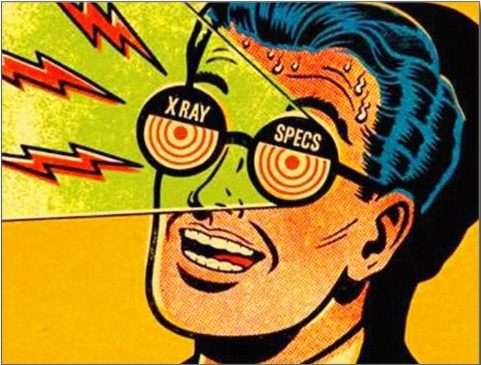For the Foreign Intelligence Surveillance Court To Be Transparent, You'd Need X-Ray Specs


Remember the advertisements in the back of comic books promising bulging muscles in no time, potato-shooting guns and other unlikely attractions? To my taste, the ads that promised the most and delivered the least touted X-Ray Specs, with the sometimes explicit assurance that they'd let you see through clothing. Sadly, they didn't. But a working model delivering true Supermanish sees-through-walls vision is what it would take to render the Foreign Intelligence Surveillance Court transparent, despite President Obama's empty assurances to the contrary.
As Jacob Sullum and Ed Krayewski have noted, President Obama sat down with Charlie Rose the other day to assure America that the surveillance state is a swell thing. Loss of privacy? Hey, everything is a tradeoff! Security!
And then, Charlie Rose asked about the process:
Rose: Should this be transparent in some way?
Obama: It is transparent. That's why we set up the FISA court.
As Jacob pointed out, "That would be the secret court established by the Foreign Intelligence Surveillance Act, the decisions of which are shielded from public view." But just how truly physically shielded the surveillance court actually is was revealed by the Washington Post three years ago, when its new digs were constructed.
Wrote Del Quentin Wilber for the Post:
First, the workers encased the room in reinforced concrete. Then came the thick wood-and-metal doors that seal into the walls. Behind those walls they labored in secret for two years, building a courtroom, judge's chambers and clerk's offices. The only sign that they were done came recently, when biometric hand scanners and green "Restricted Access" placards were placed at the entrances.
What workers have finally completed -- or perhaps not; few really know, and none would say -- is the nation's most secure courtroom for its most secretive court. In coming days, the Foreign Intelligence Surveillance Court will move from its current base at the Justice Department and settle into a new $2 million home just off a public hallway in the District's federal courthouse.
If the federal government had hung a sign on the door reading, "Not So Transparent," it couldn't be any clearer that the court is not intended to be subject to public scrutiny. Biometric hand scanners, concrete walls and restricted access all scream "secret" as loudly as can be heard past the wood-and-metal doors.
The Post quoted U.S. District Judge Royce C. Lamberth insisting that the new chambers were a demonstration that the court is no rubber stamp for the government, but it's hard to see how that can be true when we have no idea how it operates. What we do know is that the court rejected just 11 of the more than 33,900 surveillance requests received from the government over 33 years.
The gag orders that forbid surveillance order recipients from revealing that they've been ordered to surrender data to the government also suggest a little … opacity in the whole snooping operation. Google is suing for permission to simply reveal how many such orders it receives. Not the details, mind you, just how often the feds come sniffing around with FISA orders.
If you want to know what sort of deliberations lead to a vanishingly small rate of refusal of surveillance orders that recipients are forbidden to discuss, well, you'll need X-Ray Specs to see how the Foreign Intelligence Surveillance Court goes about its business.


Show Comments (69)